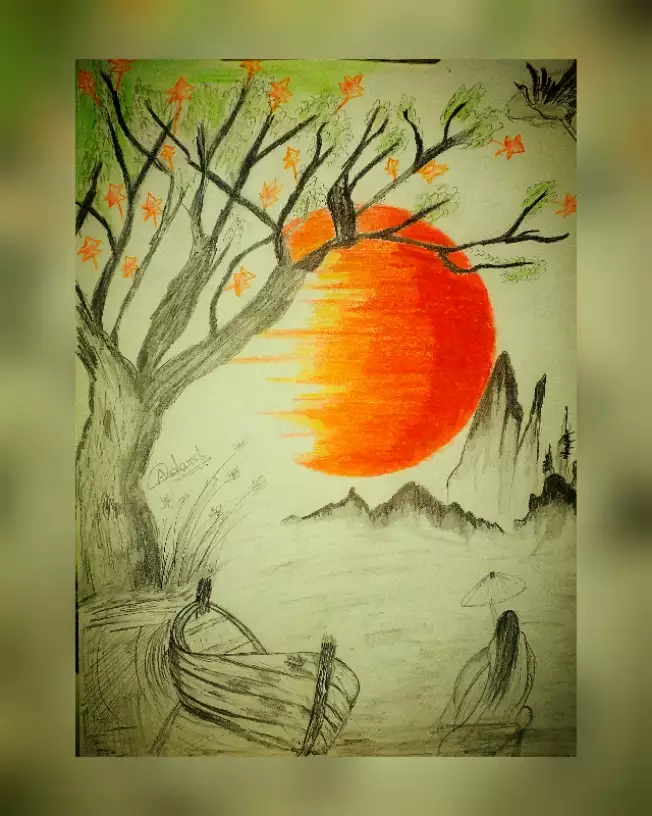Revealing the Most Intriguing Trump Art Pieces of the Years
Revealing the Most Intriguing Trump Art Pieces of the Years
Blog Article
Starting a Visual Trip Via the Lyrical Analyses of Nature in Impressionist Landscapes
Each brushstroke, each play of light and shadow, and each color option in their jobs talks volumes about the artists' deep connection to nature and their capability to translate its elegance onto the canvas. As we check out the lyrical analyses of nature in Stylist landscapes, we are welcomed to submerse ourselves in a globe where reality and emotion intertwine, providing a glimpse into the musicians' extensive appreciation for the natural globe.
The Captivating Brushstrokes of Claude Monet
Claude Monet's proficiency of brushstrokes goes beyond simple technique, imbuing his landscapes with a heavenly quality that enthralls and mesmerizes visitors - trump art. His ingenious usage of shade and light, combined with his distinct brushwork, creates a feeling of activity and life within his paintings. Monet's popular series of works depicting water lilies and his famous haystacks showcase his ability to record the short lived effects of light and atmosphere

Enjoying Light and Shadow With Camille Pissarro
Symbolizing a similar respect for the interplay of light and shadow, Camille Pissarro's artistic vision unravels as a harmonious expedition of the environment's luminous subtleties. Pissarro, a key number in the Impressionist activity, masterfully caught the dynamic relationship between light and darkness in his landscapes. His experienced use of shade and brushwork permitted him to communicate the subtle shifts in light that specify different times of day and seasons.
Pissarro's paints often feature dappled sunshine infiltrating leaves, casting intricate patterns of light and darkness on the earth listed below. In jobs such as "Hoar Frost, the Result of Snow, Pontoise," Pissarro skillfully shows the crisp illumination of winter sunshine juxtaposed with the cool darkness that define the snowy landscape. By welcoming both light and shadow in his make-ups, Pissarro invites visitors to submerse themselves in the natural elegance and short-term results of light worldwide around them.

Through Pissarro's works, we are reminded of the transformative power of light and darkness, welcoming us to pause and appreciate the fleeting minutes of charm present in the everyday landscapes that border us.
A Symphony of Colors by Edgar Degas
Edgar Degas manages a vibrant symphony of shades in his masterful art work, infusing his make-ups with a dynamic interaction of colors that mesmerize the audience's look. Known mainly for his ballet dancers and intimate scenes of Parisian life, Degas skillfully manipulated colors to communicate mood and motion in his paints. browse around this web-site trump art. His use bold, different colors and subtle tonal variations produced a feeling of depth and vibrancy within his works
Degas' color scheme commonly was composed of rich blues, deep greens, and cozy oranges, which he applied with certain brushstrokes to catch the essence of his subjects. Whether depicting a ballerina mid-performance or a group of close friends talking at a cafe, Degas' shades not just portrayed the scene yet also evoked a feeling of feeling and energy.
Furthermore, Degas' testing with light and darkness added an additional layer of complexity to his color compositions, enhancing the total environment of his paints (trump art). Through his skillful adjustment of color, Degas produced a visual harmony that remains to reverberate with viewers today
Checking out Nature's Peacefulness With Berthe Morisot
Berthe Morisot's artistic vision provides a peaceful separation from the vivid color harmonies of Edgar Degas, as she catches the harmony of nature in her evocative landscapes. Recognized for her delicate brushwork and intimate portrayals of everyday life, Morisot's landscapes exude a feeling of peace and consistency.
Morisot's paints usually feature soft, low-key tones that communicate a sense of calmness and peacefulness. Her jobs, such as "The Cradle" and "Summer's Day," display her ability to capture the subtle beauty of nature in a means that is both soothing and contemplative to the visitor.
Unlike some of her Impressionist counterparts who concentrated on bold colors and vibrant check out here make-ups, Morisot preferred to create gentle, reflective scenes that welcome the audience to stop briefly and show. Through her masterful use light and shadow, Morisot develops a feeling of harmony that reverberates with the viewer on a deep emotional level.
The Psychological Landscapes of Vincent Van Gogh
Vincent Van Gogh's landscapes vividly share a depth of emotion through their dynamic brushwork and meaningful use of shade. The Dutch post-impressionist artist is renowned for his ability to catch intense and raw emotions in his paintings, going beyond typical depictions of nature. Van Gogh's turbulent personal life, marked by mental health and wellness battles, considerably affected his art, infusing his landscapes with a sense of anxiousness, sorrowful, or exuberance.
In works such as "Starry Night" and "Wheatfield with Crows," Van Gogh's swirling brushstrokes and dynamic color choices evoke an extensive psychological response from viewers. The stormy skies and upset landscapes in his paintings reflect his inner turmoil and emotional turbulence, inviting viewers to look into the complexities of his subconscious.
Van Gogh's distinct aesthetic language, characterized by exaggerated viewpoints and strong use color, produces landscapes that reverberate with visitors on a deeply psychological degree. With his art, Van Gogh invites us to see nature not equally as an outside fact yet as a mirror of our innermost sensations and feelings.
Final Thought
To conclude, the impressionist landscapes of musicians such as Claude Monet, Camille Pissarro, Edgar Degas, Berthe Morisot, and Vincent Van Gogh use a exciting and one-of-a-kind visual interpretation of nature. Via their usage of brushstrokes, emotion, color, and light, these artists have produced a harmony of photos that evoke a sense of calmness and beauty in the environment. Their works remain to motivate and captivate audiences with their lyrical interpretations of the landscapes around us.
Each brushstroke, each play of light and darkness, and each color choice in their works talks quantities about the musicians' deep connection to nature and their ability to convert its elegance onto the canvas. His innovative use of color and light, integrated more tips here with his unique brushwork, produces a sense of motion and life within his paintings. His skilled use of color and brushwork enabled him to share the subtle shifts in light that specify different times of day and seasons.

Report this page